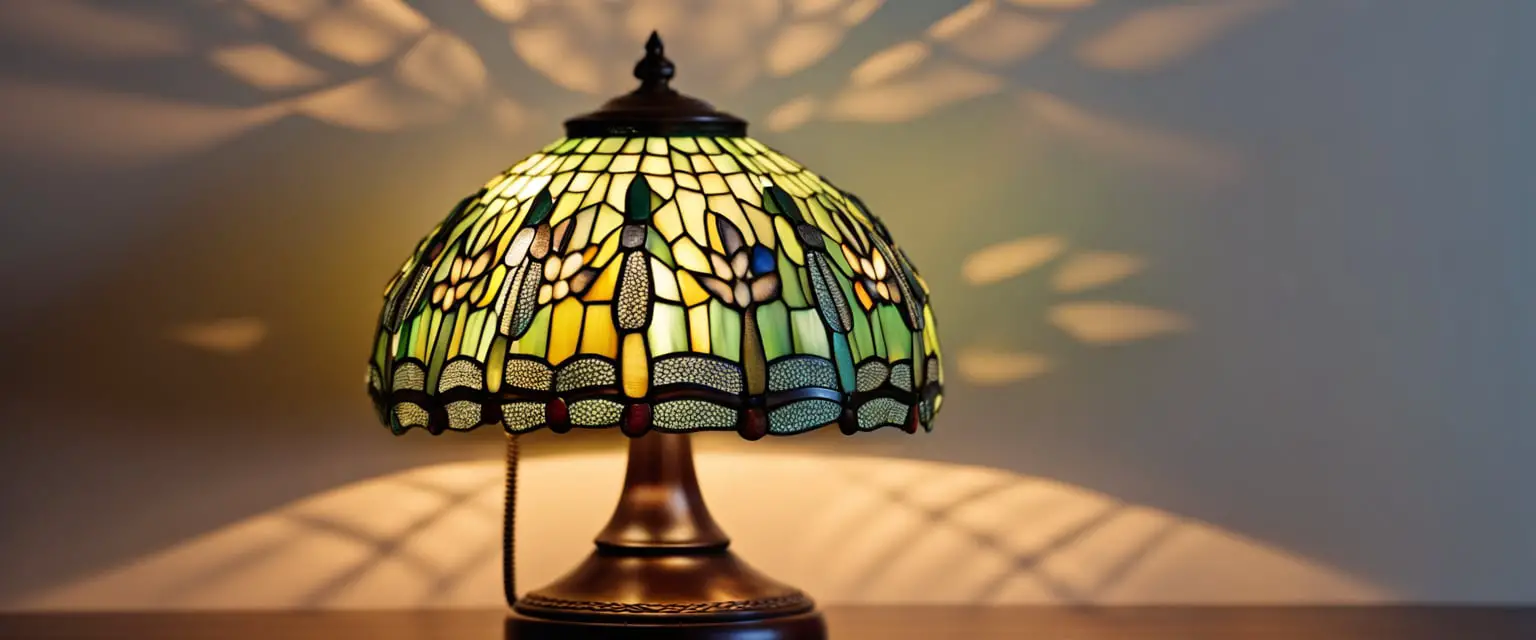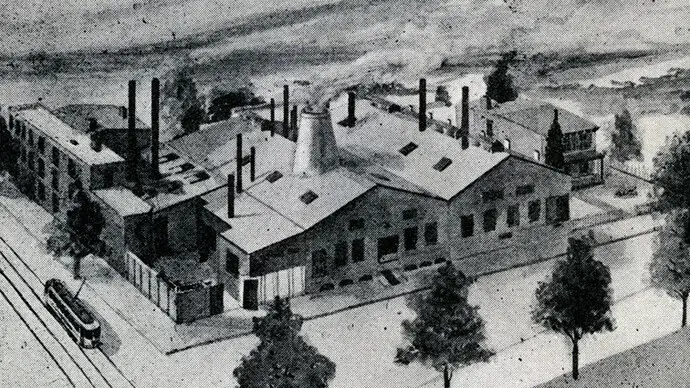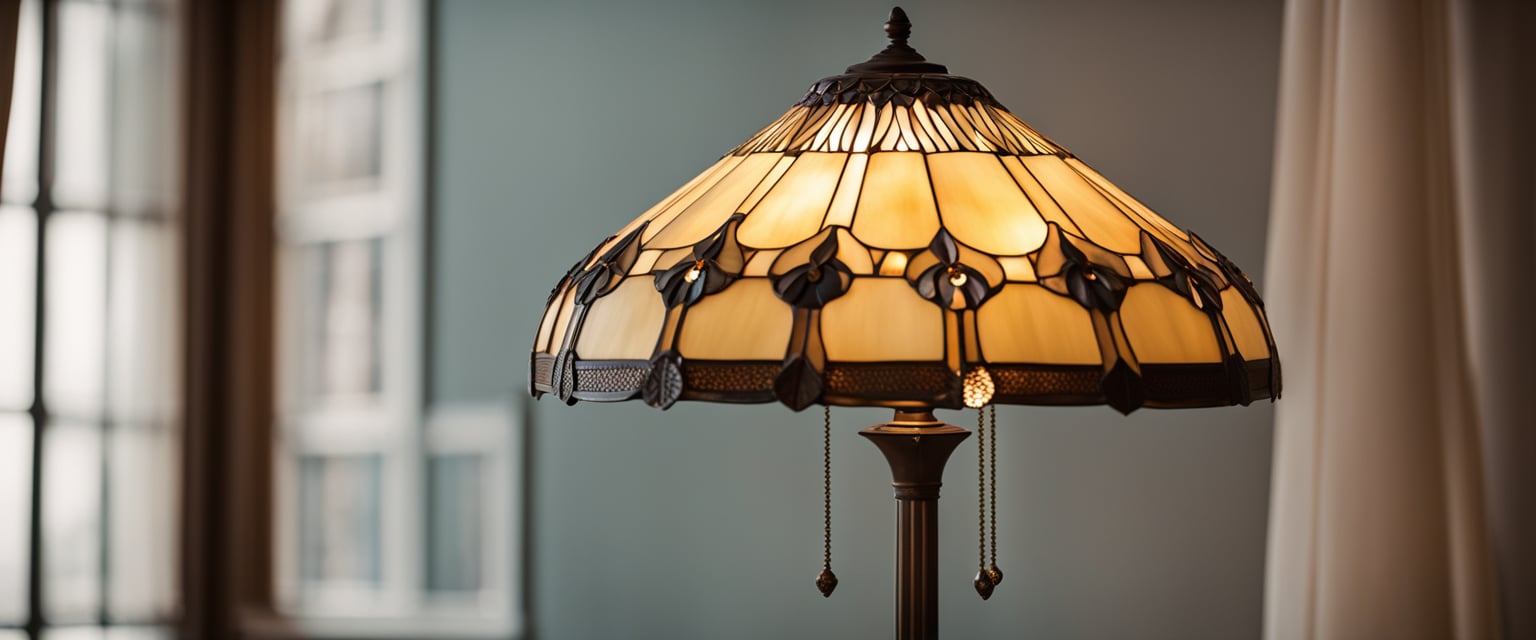The original Tiffany Dragonfly lamp is a masterpiece renowned for its intricate leaded glass shade adorned with vibrant, handcrafted dragonfly motifs, reflecting the epitome of Louis Comfort Tiffany’s innovative design and artistry. The authentic Tiffany Dragonfly lamps created by Tiffany Studios encapsulate these iconic lamps’ timeless allure and historical significance. They are celebrated for their exquisite craftsmanship and enduring beauty, making them highly coveted among collectors and enthusiasts alike.
This post explores the iconic original Tiffany Dragonfly lamp, offering insights into its exceptional craftsmanship and the enduring appeal of its intricate design. Whether you’re a passionate collector or captivated by the beauty of stained glass art, delving into the realm of the Tiffany Dragonfly lamp original will unveil the artistry and historical significance that continues to fascinate enthusiasts and collectors worldwide.

Table of Contents
Overview of The Original Tiffany Dragonfly Lamp
Tiffany Dragonfly Lamps are one of the most iconic and recognizable designs of Tiffany Studios, founded by Louis Comfort Tiffany in 1885. These lamps are known for their intricate and detailed stained glass shades, which depict dragonflies in a natural and lifelike manner.
The design of Tiffany Dragonfly Lamps is heavily inspired by nature, a popular theme during the Art Nouveau movement. Louis Comfort Tiffany was a great nature lover and often drew inspiration from it in his designs. The dragonfly, in particular, was a favorite motif of Tiffany and his team of designers.
Tiffany Dragonfly Lamps’ shades are made of leaded glass, a type of stained glass that uses lead to hold the pieces together. The glass pieces are carefully selected and cut by hand, then wrapped in copper foil before being soldered together. The result is a beautiful and intricate mosaic of glass that creates a stunning effect when illuminated.
Tiffany Dragonfly Lamps were first introduced in 1899 and quickly became one of Tiffany Studios’ most popular designs. They were produced in various sizes and shapes, often paired with decorative bases of bronze or other metals.
Today, original Tiffany Dragonfly Lamps are highly sought by collectors and art enthusiasts. They are considered some of the most valuable and iconic examples of Art Nouveau design and are prized for their beauty, craftsmanship, and historical significance.
Historical Significance Of The Original Tiffany Dragonfly lamp
Louis Tiffany and Tiffany Studios
Louis Comfort Tiffany was an American artist and designer who founded Tiffany Studios in New York in 1902. The company produced decorative arts, including lamps, windows, and mosaics. Its lamps were particularly renowned for their intricate designs and use of colorful glass.
Tiffany was heavily influenced by the Art Nouveau movement, characterized by flowing lines and organic forms. The natural world also inspired him; many of his lamp designs featured floral and insect motifs.
Tiffany’s lamps were highly coveted during his lifetime and remain highly sought after by collectors today. They were produced in limited quantities and each was handmade, contributing to their rarity and value.
Clara Driscoll’s Contribution
Clara Driscoll was a designer who worked for Tiffany Studios from 1888 to 1909. She is credited with designing many of the company’s most iconic lamps, including the Dragonfly lamp.
Driscoll was the head of the Women’s Glass Cutting Department at Tiffany Studios, which cut the glass used in the lamps. She was also a talented designer, creating many of the company’s lamp designs.
Driscoll’s contributions to Tiffany Studios were largely unrecognized during her lifetime. However, her work has since been recognized as integral to the company’s success. Today, her lamps are highly prized by collectors and are considered some of the most valuable examples of Tiffany Studios lamps.
Design and Craftsmanship
The Tiffany Dragonfly Lamp is an iconic piece of art that has been admired by many for over a century. Its design features a beautiful dragonfly motif intricately crafted with stained glass and patinated bronze. The lamp is not only aesthetically pleasing but also a testament to its designers’ skill and craftsmanship.
Stained Glass Technique
The stained glass technique used in Tiffany lamps is the copper foil technique. This technique involves wrapping each piece of glass in copper foil before soldering them together to create the lamp’s shade. The copper foil technique allows for greater flexibility in design and the creation of more intricate and detailed designs.
Favrile Glass and Patina
The Favrile glass used in Tiffany lamps is an iridescent glass developed by Louis Comfort Tiffany. This glass is known for its unique color and texture, which is achieved by adding metallic oxides to the glass during the manufacturing process. The patina used on the lamp’s base is also an essential aspect of its design. The patina is created by applying chemicals to the surface of the bronze, which causes it to oxidize and develop a unique color and texture.
Lamp Base and Structure
The lamp’s base is an important aspect of its design and is often made from patinated bronze. The base is typically designed to complement the lamp’s shade and features intricate details and designs. The lamp’s structure is also an essential aspect of its design and is intended to provide stability and support to the shade.
Identifying Authenticity
Several factors must be considered when identifying an authentic Tiffany Dragonfly Lamp. Each element is crucial in determining the lamp’s authenticity, from maker’s marks and signatures to materials and craftsmanship.
Maker’s Mark and Signatures
The maker’s mark or signature is one of the most important things to look for when identifying an authentic Tiffany Dragonfly Lamp. According to Invaluable.com, “Tiffany lamps were always signed and numbered, and the signature is a crucial element in determining authenticity.” The signature should be etched or stamped into the lamp’s base and read “Tiffany Studios New York” or “Tiffany Studios.” It should also be in capital letters and straight, not curved or sloping.
Materials and Craftsmanship
The materials and craftsmanship used in creating the lamp are essential to determine authenticity. An authentic Tiffany Dragonfly Lamp should be made of high-quality materials, such as leaded glass and bronze. The glass should be cut and assembled by hand, and the lamp should feature intricate details and patterns. According to Antique Trader, “The bronze base should be heavy and have a subtle mottled effect. The metal should also be cast, not stamped or pressed.”
Age and Patina
The age and patina of the lamp can also provide clues to its authenticity. An authentic Tiffany Dragonfly Lamp should show signs of age and wear, such as a natural patina on the metal base. The glass should also show signs of age, such as tiny bubbles or imperfections. However, the lamp should be in good condition overall, with no significant cracks or damage.
Assessing Value and Condition
Appraisal Process
To determine the value of an original Tiffany Dragonfly Lamp, you should seek the services of a reputable appraiser. An appraiser will assess the lamp’s condition, age, authenticity, rarity, and provenance. The appraiser will also consider the current market demand for the lamp and the prices of similar lamps sold at auction or by reputable dealers.
Choosing an appraiser with experience and knowledge of Tiffany lamps and no conflict of interest is vital. The appraiser should be independent and objective in their assessment. The cost of the appraisal will depend on the complexity of the lamp and the appraiser’s fees.
Factors Affecting Value
Several factors influence the value of an original Tiffany Dragonfly Lamp. These include:
Condition: The lamp’s condition is crucial in determining its value. A lamp in excellent condition with no damage, repairs, or restoration will command a higher price than a lamp in poor condition.
Rarity: The rarity of a Tiffany Dragonfly Lamp is determined by the number of lamps produced and the number of surviving lamps. A rare lamp with unique features like a rare color or pattern will be more valuable.
Authenticity: The authenticity of a Tiffany Dragonfly Lamp is determined by its provenance, markings, and construction. An original lamp will have a lead ring inside the base and a bronze or mosaic base. Reproduction lamps will have different materials and construction.
Age: The age of a Tiffany Dragonfly Lamp is a factor in determining its value. The lamps produced in the early 1900s are more valuable than those made later.
Provenance: The provenance of a Tiffany Dragonfly Lamp is important in determining its value. A lamp with a documented history of ownership by a famous collector or a notable institution will be more valuable.
Care and Maintenance
Cleaning and Handling
Taking good care of an original Tiffany Dragonfly lamp is essential to maintaining its value and beauty. Handling the lamp with care avoids damaging the delicate glass and lead construction.
Hold the lamp by the base or the metal rim at the bottom of the shade when moving it. Avoid touching the glass parts with your bare hands, as the oil from your skin can erode the surface over time.
To clean the lamp, gently use a soft, dry cloth to wipe the glass and metal parts’ surfaces. Please avoid using any cleaning solutions or water, as they can cause damage to the lamp.
Use a soft-bristled brush to remove dust and debris from the glass and metal crevices if the lamp is particularly dirty.
Restoration and Repair
If an original Tiffany Dragonfly lamp requires restoration or repair, seek the services of a qualified professional.
Restoration may involve repairing or replacing broken glass panels, re-leading the shade, or replacing the wiring and switch. Make sure to choose a restoration specialist with experience working with antique lamps and using the appropriate materials and techniques to preserve the lamp’s original condition.
When restoring an original Tiffany Dragonfly lamp, use authentic materials and techniques to maintain its value and authenticity.
For example, replacement glass panels should match the original glass in color, texture, and pattern. The wiring and switch should also be replaced with period-appropriate materials to ensure the lamp functions safely and correctly.
Weight
Original Tiffany Dragonfly lamps are known for their intricate glasswork and heavy lead construction. When handling or moving the lamp, make sure to keep in mind its weight and fragility.
Avoid lifting the lamp by the shade or any of the glass panels, as this can cause damage to the delicate construction. Instead, hold the lamp by the base or the metal rim at the bottom of the shade to ensure its safety and longevity.
Avoiding Fakes and Reproductions
Collectors must be wary of fakes and reproductions of the original Tiffany Dragonfly Lamp. Many reproductions are available on the market, making it difficult to differentiate between the original and fakes. However, key factors can help identify the real Tiffany Dragonfly Lamp.
First, look for the maker’s signature. The original Tiffany Dragonfly Lamp should have a signature on the base that reads “Tiffany Studios New York.” If the lamp does not have a signature, it is likely a reproduction or a fake.
Another way to identify the original Tiffany Dragonfly Lamp is to examine the quality of the glass. Tiffany lamps are known for their high-quality, hand-cut glass that is often opalescent or iridescent. The glass in a fake Tiffany lamp is often of lower quality. It may be machine-cut or have visible seams where the pieces have been joined together.
Furthermore, one can examine the lamp’s base to determine its authenticity. The original Tiffany Dragonfly Lamp had a heavy ring made from lead inside a hollow bronze base. Reproduction lamps use brass, zinc, white metal, wood, or plastic bases.
Lastly, one should be wary of lamps sold at prices that seem too good to be true. The original Tiffany Dragonfly Lamp is a rare and valuable piece of art, and it is unlikely that one would find it at a bargain price.
Collecting and Display
Remember a few things when collecting and displaying original Tiffany Dragonfly lamps. Collectors and enthusiasts highly seek after these lamps, and they can be pretty valuable.
Private Collections
Many private collectors have amassed impressive collections of Tiffany lamps, including the Dragonfly design. These collectors often display their lamps in carefully curated settings, such as a dedicated room or museum-quality display case.
One such collector is the Macklowe Gallery, a renowned dealer in Tiffany lamps and other decorative arts. Over the years, the gallery has sold many original Dragonfly lamps and even published a book on the subject.
Museum Exhibitions
Museums are another great place to see original Tiffany Dragonfly lamps on display. Many museums have extensive collections of Tiffany glass windows, mosaics, lights, and lampshades and may have one or more Dragonfly lamps.
For example, the Metropolitan Museum of Art in New York City has several Tiffany lamps on display, including several Dragonfly designs. The museum’s collection is considered one of the finest in the world and is a must-see for anyone interested in Tiffany’s work.
Frequently Asked Questions
How can one authenticate a genuine Tiffany Dragonfly lamp?
Authenticating a genuine Tiffany Dragonfly lamp can be challenging, but several key features are needed. One of the most important things to check is the base of the lamp, which should be made of bronze and have a lead weight inside. The shade should also be made of glass and feature intricate designs with vibrant colors. Additionally, the lamp should have a signature or maker’s mark somewhere on it, which can help to confirm its authenticity.
What distinguishes a Tiffany Dragonfly lamp reproduction from an original?
Reproductions of Tiffany Dragonfly lamps can be difficult to distinguish from originals, but there are a few key differences to look for. Reproductions often have bases made of materials other than bronze, such as brass or zinc. The glass used in reproductions may also be of lower quality and have less vibrant colors than the original Tiffany lamps. Reproductions may not have the same level of detail and craftsmanship as original lamps.
What is the historical significance of dragonfly motifs in Tiffany lamps?
Dragonfly motifs were a popular design element in Tiffany lamps, and collectors still highly seek them out today. The dragonfly symbolizes transformation and change, a popular motif during the Art Nouveau period. Tiffany Studios, founded by Louis Comfort Tiffany, was known for its innovative use of color and design, and the dragonfly motif was a perfect fit for the company’s artistic vision.
Where can one typically find the maker’s marks on an authentic Tiffany lamp?
Maker’s marks on authentic Tiffany lamps can be found in several locations. The most common place to find a maker’s mark is on the underside of the base, where it is often stamped or engraved. The lamp may also have a signature or mark on the shade itself, which can help to confirm its authenticity.
What are the key characteristics to look for in an original Tiffany Dragonfly table lamp?
When authenticating an original Tiffany Dragonfly table lamp, several key characteristics should be considered. The base should be made of bronze and have a lead weight inside. The shade should be made of glass and feature intricate designs with vibrant colors. The lamp should also have a signature or maker’s mark, which can help confirm its authenticity.
What is the estimated value range for an authentic Tiffany Dragonfly lamp?
The value of an authentic Tiffany Dragonfly lamp can vary widely. This depends on several factors, including its condition, rarity, and provenance. According to Invaluable.com, Tiffany lamps’ value can be anywhere from $4,000 to over $1 million. The most expensive Tiffany lamps sell for upwards of $1 million. The highest price ever paid for a Tiffany lamp remains $2.8 million at a Christie’s auction in 1997.



Leave a Reply